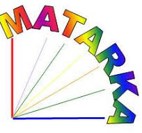Homoki gyepek regenerációjának hosszú távú sikeressége felhagyott szántókon: kezdeti restaurációs beavatkozások és a táji környezet hatásai
Absztrakt
Kutatásunkban három kezeléstípus hatását vizsgáltuk kiskunsági homoki gyepek felhagyott szántókon történő helyreállításában, 16 évvel a beavatkozások megkezdése után. Elemeztük a kezelések edényes növények fajgazdagságára, borítására, valamint a honos célfajok és az özönnövények relatív borítására gyakorolt hatását. A kezelések két különböző korú felhagyott szántón folytak 2002 és 2008 között. A két terület táji környezetének élőhely-összetételét és inváziós fertőzöttségét is összevetettük. Hosszú távú eredményeink alapján a magvetés bizonyult a leghatásosabb módszernek a homoki gyepek helyreállításában. A kaszálást és a szénforrás-adagolást a vetést kiegészítő beavatkozásokként javasoljuk. Az elemzett mutatók többsége helyspecifikus fejlődést mutatott, ami összefügghet a felhagyott szántók korával és táji adottságaival. Eredményeink alapján a homoki gyepek helyreállítása felhagyott szántókon kisebb magbeviteli egységekkel is megvalósítható.
Hivatkozások
Bakker, J. P., Berendse, F. (1999): Constraints in the restoration of ecological diversity in grassland and heathland communities. Trends in Ecology and Evolution 14: 63–68. https://doi.org/10.1016/s0169-5347(98)01544-4
Balogh, L., Dancza, I., Király, G. (2004): A magyarországi neofitonok időszerű jegyzéke, és besorolásuk inváziós szempontból. In Mihály, B., Botta-Dukát, Z. (szerk.): Biológiai inváziók Magyarországon: Özönnövények. A KvVM Természetvédelmi Hivatalának tanulmánykötetei 9. TermészetBÚVÁR Alapítvány Kiadó, Budapest, pp. 61–92.
Bartha, S., Meiners, S. J., Pickett, S. T. A., Cadenasso, M. L. (2003): Plant colonization windows in a mesic old field succession. Applied Vegetation Science 6: 205–212. https://doi.org/10.1111/j.1654-109X.2003.tb00581.x
Clark, A. (2017): Old fields. Oxford Bibliographies in Ecology. https://doi.org/10.1093/obo/9780199830060-0188
Cramer, V. A., Hobbs, R. J., Standish, R. J. (2008): What’s new about old fields? Land abandonment and ecosystem assembly. Trend in Ecology and Evolution 23: 104–112. https://doi.org/10.1016/j.tree.2007.10.005
Cramer, V. A., Hobbs, R. J. (eds.) (2007): Old fields: Dynamics and Restoration of Abandoned Farmland. Island Press, Washington, D.C., 334 p. https://doi.org/10.5860/choice.45-4977
Csathó, A. I. (2011): Az elsődleges és másodlagos mezsgyék növényzetének összehasonlító vizsgálata a Battonyai Gránic és Csárda-dűlő példáján. Tájökológiai Lapok 9(2): 345–356.
Csecserits, A., Botta-Dukát, Z., Kröel-Dulay, Gy., Lhotsky, B., Ónodi, G., Rédei, T., Szitár, K., Halassy, M. (2016): Tree plantations are hot-spots of plant invasion in a landscape with heterogeneous land-use Agriculture. Ecosystems and Environment 226: 88–89. https://doi.org/10.1016/j.agee.2016.03.024
Csecserits, A., Czúcz, B., Halassy, M., Kröel-Dulay, Gy., Rédei, T., Szabó, R., Szitár, K., Török, K. (2011): Regeneration of sandy old-field in the forest steppe region of Hungary. Plant Biosystems 145: 715–729. https://doi.org/10.1080/11263504.2011.601340
Csontos, P., Kalapos, T., Tamás, J. (2016): Comparison of seed longevity for thirty forest, grassland and weed species of the Central European flora: Results of a seed burial experiment. Polish Journal of Ecology 64(3): 313–326. https://doi.org/10.3161/15052249PJE2016.64.3.002
Davis, M.A., Grime, J. P., Thompson, K. (2000): Fluctuating resources in plant communities: A general theory of invasibility. Journal of Ecology 88: 528–534. https://doi.org/10.1046/j.1365-2745.2000.00473.x
Halassy, M., Botta-Dukát, Z., Csecserits, A., Szitár, K., Török, K. (2019): Trait-based approach confirms the importance of propagule limitation and assembly rules in old-field restoration: Propagule limitation and assembly rules in restoration. Restoration Ecology 27: 840–849. https://doi.org/10.1111/rec.12929
Halassy, M., Kövendi-Jakó, A., Reis, B. P., Szitár, K., Seyidova, Z., Török, K. (2021): N immobilization treatment revisited: a retarded and temporary effect unfolded in old field restoration. Applied Vegetation Science 24: e12555. https://doi.org/10.1111/avsc.12555
Halassy, M., Singh, A., Szabó, R., Szili-Kovács, T., Szitár, K., Török, K. (2016): The application of a filter-based assembly model to develop best practices for Pannonian sand grassland restoration. Journal of Applied Ecology 53: 765–773. https://doi.org/10.1111/1365-2664.12618
Kelemen, A., Török, P., Valkó, O., Deák, B., Miglécz, T., Tóth, K., Ölvedi, T., Tóthmérész, B. (2014): Sustaining recovered grasslands is not likely without proper management: vegetation changes after cessation of mowing. Biodiversity and Conservation 23: 741–751. https://doi.org/10.1007/s10531-014-0631-8
Kövendi-Jakó, A., Csecserits, A., Szitár, K., Halassy, M., Hülber, K., Wrbka, T., Török, K. (2019) Three years of vegetation development worth 30 years of secondary succession in urbanindustrial grassland restoration. Applied Vegetation Science 22: 138–149. https://doi.org/10.1111/avsc.12410
Kröel-Dulay, Gy., Csecserits, A., Szitár, K., Molnár, E., Szabó, R., Ónodi, G., Botta-Dukát, Z. (2019): The potential of common ragweed for further spread: invasibility of different habitats and the role of disturbances and propagule pressure. Biological Invasions 21: 137–149. https://doi.org/10.1007/s10530-018-1811-3
Llumiquinga, Y. B., Reis, B. P., Sáradi, N., Török, K., Szitár, K., Halassy, M. (2021): Long-term results of initial seeding, mowing and carbon amendment of the restoration of Pannonian sand grassland on old-fields. Tuexenia 41: 361–379. https://doi.org/10.14471/2021.41.013
Maron, J. L., Jefferies, R. (2001): Restoring enriched grasslands: Effects of mowing on species richness, productivity, and nitrogen retention. Ecological Applications 11(4): 1088–1100. https://doi.org/10.2307/3061014
Mihók, B., Biró, M., Molnár, Zs., Kovács, E., Bölöni, J., Erős, T., Standovár, T., Török, P., Csorba, G., Margóczi K., Báldi, A. (2017): Biodiversity on the waves of history: Conservation in a changing social and institutional environment in Hungary, a post-soviet EU member state. Biological Conservation 211: 67–75. https://doi.org/10.1016/j.biocon.2017.05.005
Perpiña, C., Kavalov, B., Diogo, V., Jacobs, C., Batista, F. E., Lavalle, C. (2018): Agricultural Land Abandonment in the EU within 2015-2030. No JRC113718, JRC Working Papers, Joint Research Centre (Seville site), https://EconPapers.repec.org/RePEc:ipt:iptwpa:jrc113718.
Perry, L. G., Blumenthal, D. M., Monaco, T. A., Pashcke, M. W., Redente, E. F. (2010): Inmobilization nitrogen to control plant invasion. Oecologia 163: 13–24. https://doi.org/10.1007/s00442-010-1580-x
Pinheiro, J., Bates, D., DebRoy, S., Sarkar, D., Heisterkamp, S., Van Willigen, B. (n.d.) (2017): Package ‘nlme’. Linear and Nonlinear Mixed Effects Models. Version 3–1. https://cran.r-project.org/web/packages/nlme
Prach, K., Jongepierová, I., Rehounková, K. (2013): Large-scale restoration of dry grasslands on exarable land using a regional seed mixture: Establishment of target species. Restoration Ecology 21: 33–39. https://doi.org/10.1111/j.1526-100X.2012.00872.x
R Core Team (2019): R: A language and environment for statistical computing. R Foundation for Statistical Computing, Vienna. https://www.R-project.org/
Reis, B. P., Kövendi-Jakó, A., Szitár, K., Török, K., Halassy, M. (2021): Long-term effect of mowing on the restoration of Pannonian sand grassland to replace invasive black locust plantation. Restoration Ecology 29(S1): e13152. https://doi.org/10.1111/rec.13152
Török, K., Szili-Kovács, T., Halassy, M., Tóth, T., Hayek, Z., Paschke, M. W., Wardell, L. J. (2000): Immobilization of soil nitrogen as a possible method for the restoration of sandy grassland. Applied Vegetation Science 3: 7–14. https://doi.org/10.2307/1478913
Török, K., Szitár, K., Halassy, M., Szabó, R., Szili-Kovács, T., Baráth, N., Paschke, M. W. (2014): Long-term outcome of nitrogen immobilization to restore endemic sand grassland in Hungary. Journal of Applied Ecology 51: 756–765. https://doi.org/10.1111/1365-2664.12220
Török, P., Deák, B., Vida, E., Valkó, O., Lengyel, Sz., Tóthmérész, B. (2010): Restoring grassland biodiversity: Sowing low-diversity seed mixtures can lead to rapid favourable changes. Biological Conservation 143: 806–812. https://doi.org/10.1016/j.biocon.2009.12.024
Török, P., Helm, A., Kiehl, K., Buisson, E., Valkó, O. (2018): Beyond the species pool: modification of species dispersal, establishment, and assembly by habitat restoration. Restoration Ecology 26: S65–S72. https://doi.org/10.1111/rec.12825
Valkó, O., Deák, B., Török, P., Kelemen, A., Miglécz, T., Tóth, K., Tóthmérész, B. (2016a): Abandonment of croplands: problem or chance for grassland restoration? Case studies from Hungary. Ecosystem Health and Sustainability 2: e01208. https://doi.org/10.1002/ehs2.1208
Valkó, O., Deák, B., Török, P., Kirmer, A., Tishew, S., Kelemen, A., Tóth, K., Miglécz, T., Radócz, Sz., Sonkoly, J., Tóth, E., Kiss, R., Kapocsi, I., Tóthmérész, B. (2016b): High-diversity sowing in establishment gaps: a promising new tool for enhancing grassland biodiversity. Tuexenia 36: 359–378. https://doi.org/10.14471/2016.36.020
Valkó, O., Deák, B., Török, P., Tóth, K., Kiss, R., Kelemen, A., Miglécz, T., Sonkoly, J., Tóthmérész, B. (2021): Dynamics in vegetation and seed bank composition highlight the importance of post-restoration management in sown grasslands. Restoration Ecology 29(S1): e13192. https://doi.org/10.1111/rec.13192
Zuur, A., Ieno, E. N., Walker, N., Saveliev, A. A., Smith, G. M. (2009): Mixed Effects Models and Extensions in Ecology with R. Springer, New York, 580 p.






